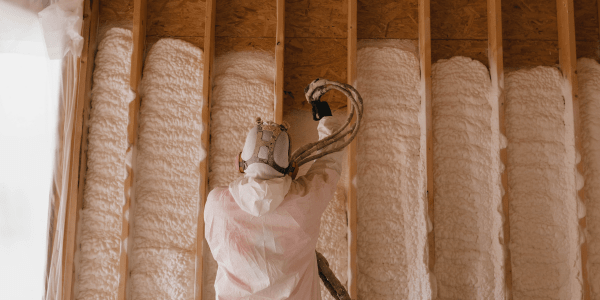Insulation 101: Why Spray Foam is the Key to a More Energy-Efficient Home

When it comes to making your home more energy-efficient, insulation plays a much bigger role than you might think. It’s not just about keeping your house warm in the winter—it also helps keep things cool in the summer and saves you money on energy bills year-round. With so many options out there, how do you choose the right one? Let’s break down the different types of insulation and why spray foam is one of the best options available.
Different Types of Insulation: What You Need to Know
- Fiberglass Insulation: This is probably what most people think of when they hear "insulation." Fiberglass comes in rolls or batts that are placed between wall studs and ceiling joists. It’s affordable and easy to install, but it doesn't always provide the best seal, which means air can still leak out.
- Cellulose Insulation: Made from recycled paper products, cellulose is usually blown into attics or walls. It's more eco-friendly than fiberglass, but it can settle over time, losing some of its effectiveness.
- Foam Board Insulation: Foam boards are rigid panels typically used in basement walls or foundations. They offer good insulation but can be tricky to install, especially around irregular shapes.
- Spray Foam Insulation: Spray foam is applied as a liquid that expands into foam, filling in all the gaps and cracks that other insulation types might miss. It’s known for its excellent insulating properties and ability to seal even the tiniest spaces.
Why Spray Foam is a Game Changer
So, what makes spray foam so special? Let’s break down the key reasons:
- Top-Notch Insulating Power: Spray foam provides a higher R-value per inch than most other insulation types. In simple terms, this means it offers better insulation with less material. This makes it especially useful in areas where space is limited.
- Stops Air Leaks: Unlike other insulation types that can leave gaps, spray foam expands to fill every nook and cranny. This creates a tight seal that prevents drafts and air leaks, which are some of the biggest causes of energy loss in homes.
- Keeps Moisture Out: Not only does spray foam insulate, but it also acts as a moisture barrier. This is especially helpful in basements or crawl spaces, where dampness can lead to mold and mildew.
- Long-Lasting Performance: While other types of insulation can sag, settle, or wear out over time, spray foam stays put. Once installed, it remains effective for years without needing to be replaced.
Where Should You Use Spray Foam?
Spray foam is great for a variety of areas in your home, especially those prone to air leaks or moisture. Here are some of the top spots where it can make a big difference:
- Attics: Since heat rises, an attic is often one of the main places where energy is lost. Spray foam can be used to seal around rafters, vents, and other tricky spots.
- Crawl Spaces and Basements: These areas tend to be damp and drafty, making them perfect candidates for spray foam insulation. Sealing them off helps keep your entire home more comfortable.
- Exterior Walls: By sealing the exterior walls of your home, spray foam can help prevent energy from escaping and improve your home’s overall efficiency.
Balancing Cost and Long-Term Savings
It’s true that spray foam insulation can be more expensive upfront compared to other types like fiberglass or cellulose. However, the long-term savings often make it worth the investment. Since it reduces air leakage and helps your heating and cooling systems run more efficiently, you’ll likely see a decrease in your energy bills.
Additionally, using spray foam can increase the overall value of your home, as buyers are often willing to pay more for energy-efficient properties. So, while the initial cost may be higher, the benefits you gain—both financially and environmentally—make it a smart choice for the long haul.
Why Professional Installation is Key
Spray foam insulation works best when it’s installed properly. Because it expands after application, it takes some expertise to make sure it’s applied evenly and fills all the right areas. That’s why it’s important to work with professionals who know the ins and outs of spray foam installation.
For homeowners who want to explore their insulation options, experts like iFoam can ensure the job is done right. With their experience, they can assess your home’s needs and apply the spray foam to maximize its benefits. If you’re ready to take the next step in making your home more energy-efficient, you can reach iFoam at (833) 937-0011.